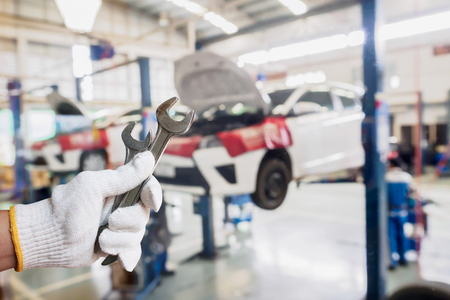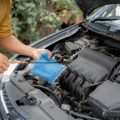1. Understanding Certified Pre-Owned Programs
When you’re shopping for a car in the U.S., you might come across the term “Certified Pre-Owned” or CPO. But what exactly does this mean, and how is it different from buying a regular used car? Here’s a simple breakdown to help you understand the basics and benefits of Certified Pre-Owned programs.
What Is a Certified Pre-Owned (CPO) Vehicle?
A Certified Pre-Owned vehicle is a used car that has gone through a detailed inspection and meets specific standards set by the manufacturer or dealer. These vehicles are usually newer models with lower mileage and no history of major accidents. They often come with added perks that you won’t find with standard used cars.
CPO vs. Standard Used Cars: Key Differences
| Feature | Certified Pre-Owned (CPO) | Standard Used Car |
|---|---|---|
| Inspection Process | Comprehensive, multi-point inspection by certified technicians | Basic safety check or minimal inspection |
| Warranty Coverage | Extended manufacturer-backed warranty included | Usually sold “as-is” or with limited short-term coverage |
| Vehicle History | Must have clean title and clear vehicle history report | No guarantee of accident-free or clean title status |
| Added Benefits | Roadside assistance, free maintenance, exchange policy (varies by brand) | Rarely includes extra perks or benefits |
| Mileage/Age Limits | Typically low mileage and newer model years only qualify | No strict limits on age or mileage |
Why Choose a CPO Vehicle?
Buying a CPO car gives you peace of mind because these vehicles have been thoroughly inspected and reconditioned to meet high standards. You also get an extended warranty, so you’re protected against unexpected repairs. Plus, many manufacturers offer extras like roadside assistance and even complimentary maintenance for a certain period.
Popular CPO Brands in the U.S.
- Toyota Certified Used Vehicles
- Honda Certified Pre-Owned Vehicles
- Ford Blue Advantage Certified Vehicles
- BMW Certified Pre-Owned Program
- Lexus L/Certified Program
- Nissan Certified Pre-Owned Vehicles
CPO programs are designed to give buyers extra confidence when purchasing a used car, making them an appealing choice for anyone looking for quality and reliability without paying full price for a brand-new vehicle.
2. Exterior Condition and Appearance
When checking out a Certified Pre-Owned (CPO) vehicle, the way it looks on the outside says a lot about its history and how well its been cared for. A thorough inspection of the exterior is key to making sure you’re not missing any hidden issues that could cost you down the road.
Key Visual and Structural Checks
Here’s what you should focus on when looking at the exterior of a CPO car:
| Area | What to Check | What to Watch For |
|---|---|---|
| Body Panels | Walk around the car and check all doors, fenders, hood, and trunk for alignment. | Uneven gaps or misaligned panels can signal previous accidents or repairs. |
| Paint Quality | Look at the paint under natural light, checking for color consistency across all panels. | Different shades, overspray, or rough spots may mean repainting after damage. |
| Lighting | Inspect headlights, taillights, turn signals, and marker lights for cracks or cloudiness. | Foggy or cracked lenses can impact nighttime visibility and may need replacement. |
| Glass | Check all windows and mirrors for chips, cracks, or scratches. | Even small chips can grow into bigger problems and affect safety inspections. |
| Signs of Damage or Repairs | Look for signs like fresh sealant, new bolts, or uneven surfaces around doors or trunk. | Poor repair jobs might cause leaks or rust later on. |
Tips for Your Inspection
- Bring a flashlight to spot imperfections in shaded areas.
- If possible, inspect the car when it’s clean and dry so dirt doesn’t hide any flaws.
- Bend down and look along the sides of the car to spot dents or waviness in body panels.
- Don’t forget to check undercarriage edges for rust or damage from road debris or curb scrapes.
The Importance of Exterior Checks in CPO Cars
A CPO vehicle should meet high standards inside and out. Scrutinizing its exterior helps make sure you’re getting a ride that looks great—and hasnt been hiding any past trouble. If anything seems off, ask the dealer about it and don’t hesitate to request repair records or additional inspections before moving forward.

3. Mechanical and Safety Systems Inspection
Key Areas CPO Inspectors Check
Certified Pre-Owned (CPO) vehicles go through a rigorous mechanical and safety systems inspection before they earn that coveted CPO badge. Dealerships want to make sure these cars are reliable, safe, and ready for the road. Here’s a breakdown of what mechanics look for during the inspection process:
Critical Components Evaluated
| System | What Inspectors Check | Typical Standards |
|---|---|---|
| Engine | Leaks, abnormal noises, oil condition, starting performance, emissions system | No leaks or warning lights; smooth idle and acceleration; passes emissions test |
| Transmission & Drivetrain | Smooth shifting, fluid level/condition, clutch operation (if manual) | No slipping or hard shifts; no fluid leaks; proper response in all gears |
| Brakes | Pad/shoe thickness, rotor/drum wear, ABS operation, brake lines/hoses | Adequate pad life; no pulsation or grinding; ABS system fully functional |
| Suspension & Steering | Shock absorbers/struts, ball joints, bushings, alignment, steering response | No excessive play or noises; smooth ride; proper wheel alignment |
| Safety Features | Airbags, seat belts, horn, lights, tire pressure monitoring system (TPMS) | No warning lights; all features function correctly; meets federal safety standards |
Dealership Standards for CPO Vehicles
CPO vehicles must meet strict manufacturer or dealership guidelines. This usually means:
- No history of major accidents or frame damage.
- All safety recalls addressed before sale.
- Only genuine parts used for repairs and maintenance.
- Inspection points can range from 100 to 200+ items depending on the brand.
- A clean title is mandatory—no salvage or rebuilt titles allowed.
The Importance of These Inspections for Buyers
This thorough checkup helps give buyers peace of mind. When you buy a CPO car from a reputable dealer in the U.S., you’re getting a vehicle that’s been checked from bumper to bumper—not just washed and polished. Always ask to see the inspection checklist before you sign anything!
4. Interior Comfort and Functionality
When checking a Certified Pre-Owned (CPO) vehicle, it’s important to make sure the interior meets your expectations for comfort and convenience. A well-kept interior not only makes every drive more enjoyable but also reflects how the car was cared for by its previous owner. Here’s a checklist of what to look for in the interior of a CPO vehicle:
Seating
- Check all seats for stains, tears, or excessive wear
- Test seat adjustments (manual or power) for smooth operation
- Ensure headrests and seatbelts are intact and functional
- If heated or ventilated seats are included, verify that these features work properly
Carpeting and Floor Mats
- Inspect carpets and mats for cleanliness, rips, or water damage
- Look under mats for any signs of moisture or mildew
Dashboard Electronics and Controls
- Check that all dashboard lights come on during ignition, then go off as expected
- Test all buttons, switches, and knobs (including those for windows, mirrors, and locks)
- Verify the horn, wipers, and turn signals work properly
Infotainment System
- Turn on the radio and test AM/FM channels, Bluetooth, USB ports, and auxiliary inputs
- If equipped with navigation, ensure it loads maps and provides accurate directions
- Pair your phone via Bluetooth to confirm connectivity and hands-free calling functions
- Test speakers for sound quality without distortion
Climate Control System
- Switch between heat and air conditioning to ensure both work efficiently
- Test all fan speeds and vent settings (including defrosters)
- If dual-zone or rear climate controls are available, check them too
CPO Interior Comfort Checklist Table
| Amenity/Feature | What to Check |
|---|---|
| Seating Condition & Functionality | No stains/tears; adjusters working; heated/cooled seats tested if equipped |
| Carpeting & Mats | No stains; no odors; no signs of water damage under mats |
| Dashboard Controls/Electronics | All lights cycle correctly; switches/buttons/knobs respond as intended |
| Infotainment System | Radio reception clear; Bluetooth pairs; navigation functional if present; sound system works well |
| Climate Control System | A/C and heat function; fans/vents operate at all speeds/settings; defroster works; rear controls tested if available |
This thorough inspection of the car’s interior will help you spot potential problems before you buy. A comfortable, fully functioning cabin can make all the difference in your daily driving experience.
5. Vehicle History and Paperwork Review
Before sealing the deal on a Certified Pre-Owned (CPO) vehicle, it’s crucial to take a close look at its history and all related paperwork. This step helps ensure you’re not buying a car with hidden issues or questionable background. Here’s what you should pay attention to:
Best Practices for Reviewing Vehicle History
- Check for a Clean Title: Always confirm the title is clean—not salvaged or rebuilt. Ask to see the physical title and make sure it matches the seller’s information.
- Review Accident Reports: Request a vehicle history report from services like Carfax or AutoCheck. Look for any records of accidents, flood damage, or major repairs.
- Verify Maintenance Records: A well-maintained CPO car will have detailed service records. These should show regular oil changes, tire rotations, brake checks, and other scheduled maintenance.
- Confirm Warranty Coverage: Double-check what’s covered under the CPO warranty—some may only cover certain parts or systems. Get this in writing so there are no surprises later.
- Match Paperwork with Vehicle Condition: Cross-reference maintenance records and accident history with the actual condition of the car. For example, if the paperwork says the brakes were recently replaced, check that the brakes feel responsive during your test drive.
Paperwork Checklist Table
| Document | What to Look For | Red Flags |
|---|---|---|
| Title | Clean status, matching VIN, correct owner info | Salvage or rebuilt status, mismatched VINs |
| Accident Report | No major accidents or flood/fire damage | Multiple accidents, frame damage reported |
| Maintenance Records | Consistent service intervals, recent repairs/maintenance | Sporadic maintenance, missing records for key items |
| CPO Warranty Documents | Covers major systems (engine, transmission), expiration date clearly stated | No warranty coverage listed, ambiguous terms |
| Odometer Disclosure Statement | Mileage matches dashboard odometer reading | Mileage discrepancies between paperwork and car |
Tips for a Smooth Process
- If something doesn’t add up—like missing documents or unexplained gaps in service history—don’t be afraid to ask questions until you’re satisfied with the answers.
- You can also bring along a trusted mechanic or knowledgeable friend to help review paperwork and inspect the vehicle for extra peace of mind.
- The more documentation you have, the better protected you’ll be against future surprises.

